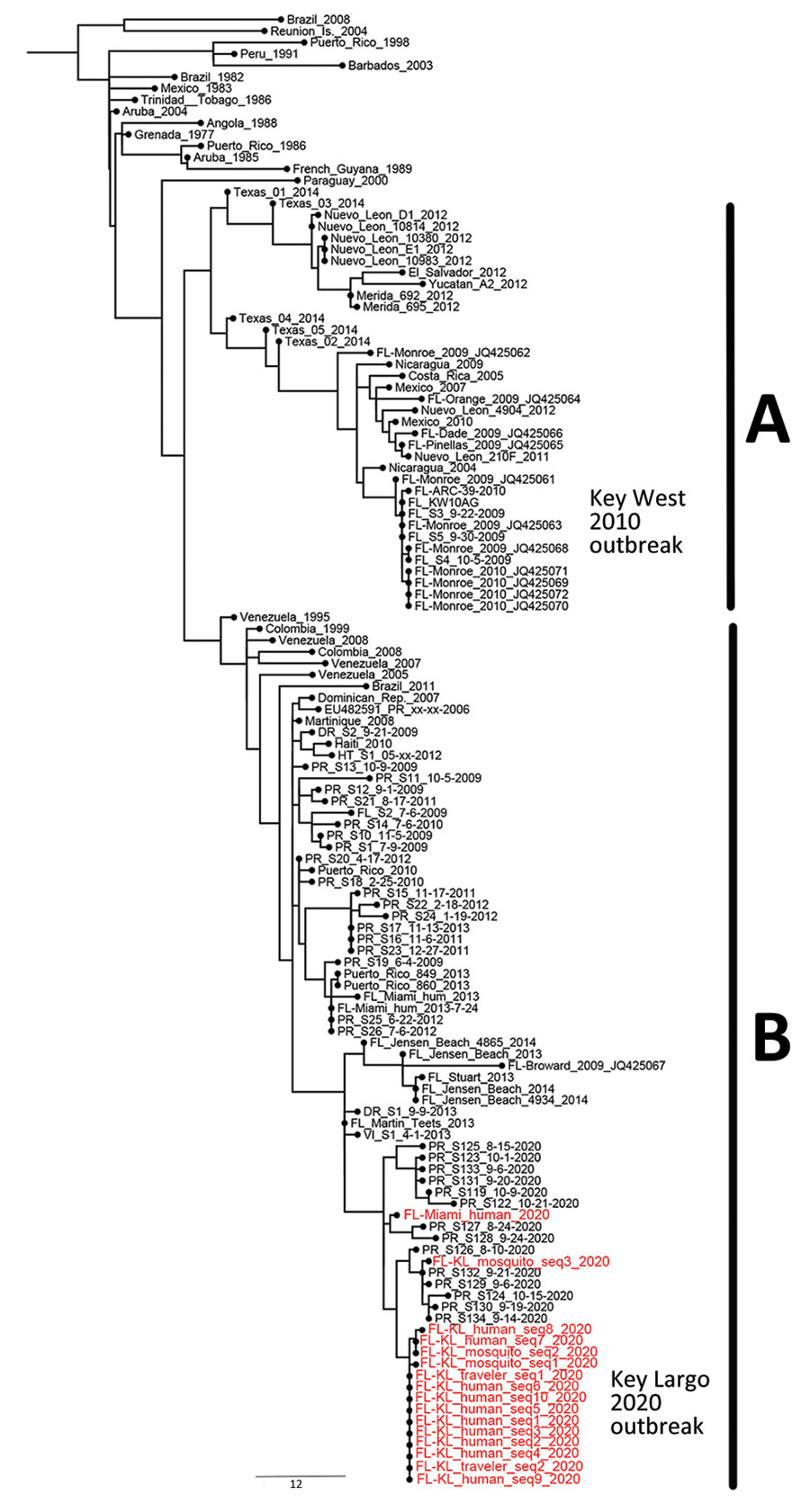Dengue Outbreak Response during COVID-19 Pandemic, Key Largo, Florida, USA, 2020
Devin Rowe, Catherine McDermott, Ysla Veliz, Alison Kerr, Mark Whiteside, Mikki Coss, Chad Huff, Andrea Leal, Edgar Kopp, Alexis LaCrue, Lea A. Heberlein, Laura E. Adams, Gilberto A. Santiago, Jorge L. Munoz-Jordan, Gabriela Paz-Bailey, Andrea M. Morrison

, and
Florida Department of Health Dengue Investigation Team1
Author affiliations: Florida Department of Health, Tallahassee, Florida, USA (D. Rowe, C. McDermott, Y. Veliz, A. Kerr, M. Whiteside, E. Kopp, A. LaCrue, L.A. Heberlein, A.M. Morrison); Florida Keys Mosquito Control District, Marathon, Florida, USA (M. Coss, C. Huff, A. Leal); Centers for Disease Control and Prevention, San Juan, Puerto Rico, USA (L.E. Adams, G.A. Santiago, J.L. Munoz-Jordan, G. Paz-Bailey)
Main Article
Figure 2

Figure 2. Phylogenetic reconstruction of dengue virus 1 from a dengue outbreak response during COVID-19 pandemic, Key Largo, Florida, USA, 2020. A) Central American lineage, 1986–2014; B) Caribbean lineage, 2008–2020. Maximum-likelihood tree of genotype V was inferred by using envelope gene sequences representing the Central American and Caribbean lineages. Red text indicates sequences obtained in this study. Sequence FL-Miami_human_2020 was obtained from a Miami-Dade County resident with recent travel history to Cuba. We obtained 2 sequences (GenBank accession nos. OM909246 and OM909247) from the National Reference Laboratory for Arboviruses, French Armed Forces Biomedical Research Institute, Bretigny-sur-Orge, France. Scale bar indicates nucleotide substitutions per site.
Main Article
Page created: June 22, 2023
Page updated: July 20, 2023
Page reviewed: July 20, 2023
The conclusions, findings, and opinions expressed by authors contributing to this journal do not necessarily reflect the official position of the U.S. Department of Health and Human Services, the Public Health Service, the Centers for Disease Control and Prevention, or the authors' affiliated institutions. Use of trade names is for identification only and does not imply endorsement by any of the groups named above.
